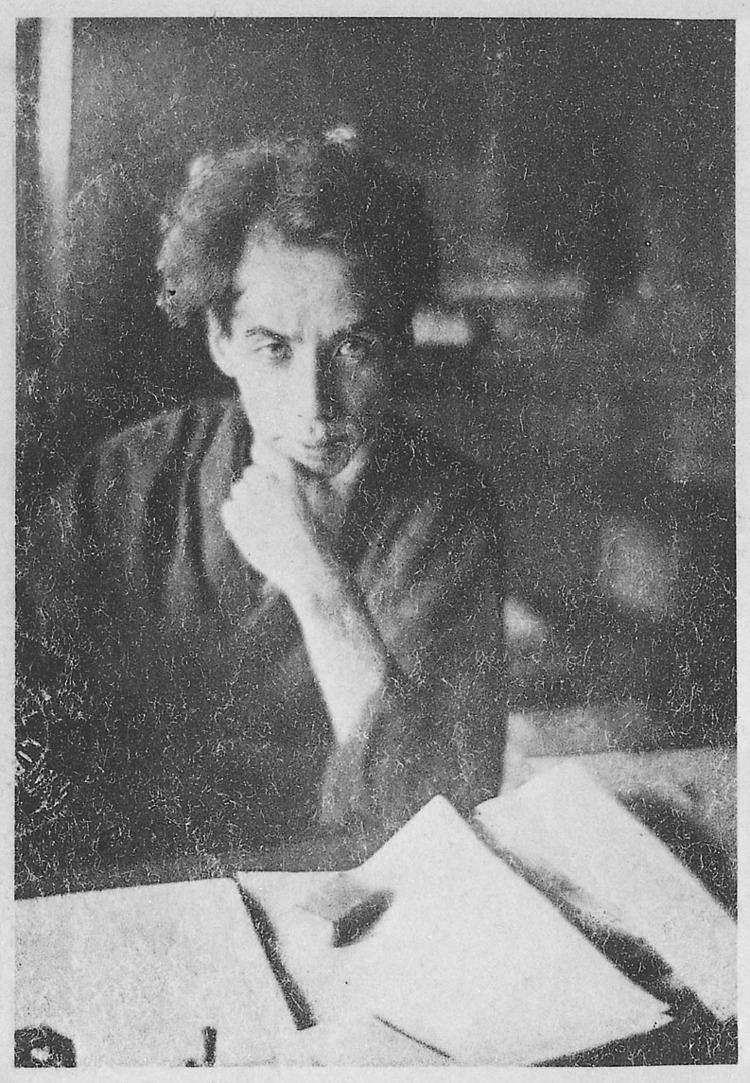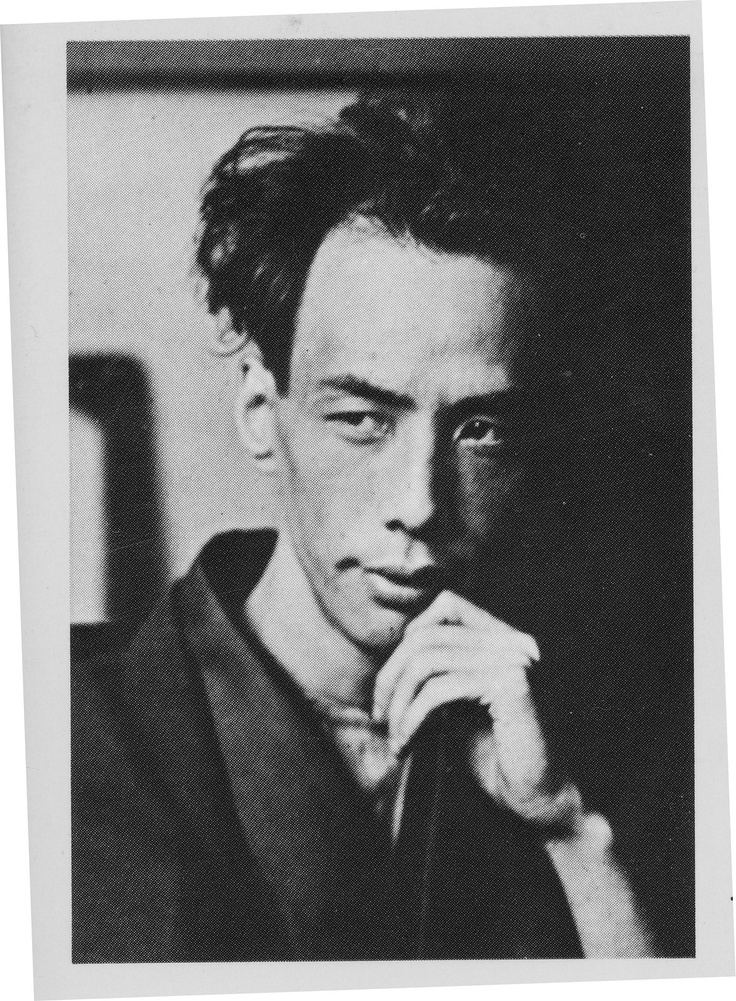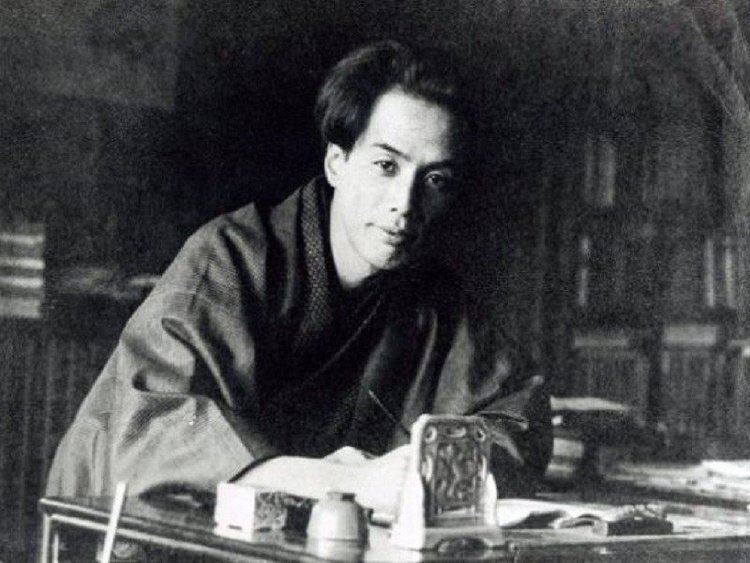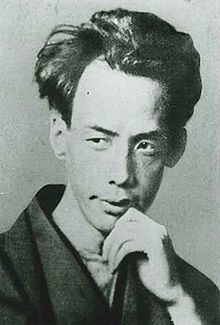Occupation Writer Name Ryunosuke Akutagawa | Genre short stories Role Writer | |
 | ||
Spouse Fumi Akutagawa (m. 1919–1927) Parents Michiaki Akutagawa, Toshizo Niihara, Fuku Niihara Movies Rashomon, Portrait of Hell, The Outrage, Iron Maze, The Christ of Nanjing, Misty, The Nose Books Rashomon, The Spider\'s Thread, In a Grove, Hell Screen, Kappa Similar Doppo Kunikida, Osamu Dazai, Atsushi Nakajima | ||
The Hell Screen - Ryūnosuke Akutagawa (transl. by Morinaka Akira)
Ryūnosuke Akutagawa (芥川 龍之介, Akutagawa Ryūnosuke, 1 March 1892 – 24 July 1927) was a Japanese writer active in the Taishō period in Japan. He is regarded as the "Father of the Japanese short story" and Japan's premier literary award, the Akutagawa Prize, is named after him. He committed suicide at the age of 35 through an overdose of barbital.
Contents
- The Hell Screen Rynosuke Akutagawa transl by Morinaka Akira
- Ry nosuke akutagawa s 121th birthday google logo doodle
- Early life
- Literary career
- Influences
- Later life
- Legacy
- Selected works in translation
- References

Ry nosuke akutagawa s 121th birthday google logo doodle
Early life

Ryūnosuke Akutagawa was born in the Kyōbashi district of Tokyo, the third child and only son of father Toshizō Niihara and mother Fuku Niihara (née Akutagawa). He was named "Ryūnosuke" ("Son [of] Dragon") because he was born in the Year of the Dragon, in the Month of the Dragon, on the Day of the Dragon, and at the Hour of the Dragon. His mother went insane shortly after his birth, so he was adopted and raised by his maternal uncle, Dōshō Akutagawa, from whom he received the Akutagawa family name. He was interested in classical Chinese literature from an early age, as well as in the works of Mori Ōgai and Natsume Sōseki.

He entered the First High School in 1910, developing relationships with classmates such as Kan Kikuchi, Kume Masao, Yamamoto Yūzō, and Tsuchiya Bunmei, all of whom would later become authors. He began writing after entering Tokyo Imperial University in 1913, where he studied English literature.

While still a student he proposed marriage to a childhood friend, Yayoi Yoshida, but his adoptive family did not approve the union. In 1916 he became engaged to Fumi Tsukamoto, whom he married in 1918. They had three children: Hiroshi Akutagawa (1920–1981) was an actor, Takashi Akutagawa (1922–1945) was killed as a student draftee in Burma, and Yasushi Akutagawa (1925–1989) was a composer.
After graduation, he taught briefly at the Naval Engineering School in Yokosuka, Kanagawa as an English language instructor, before deciding to devote his full efforts to writing.
Literary career
In 1914, Akutagawa and his former high school friends revived the literary journal Shinshichō ("New Currents of Thought"), publishing translations of William Butler Yeats and Anatole France along with their own works. Akutagawa published his first short story Rashōmon the following year in the literary magazine Teikoku Bungaku ("Imperial Literature"), while still a student. The story, based on a twelfth-century tale, was not well received by Akutagawa's friends, who criticized it extensively. Nonetheless, Akutagawa gathered the courage to visit his idol, Natsume Sōseki, in December 1915 for Sōseki's weekly literary circles. In early 1916 he published Hana ("The Nose", 1916), which attracted a letter of praise from Sōseki and secured Akutagawa his first taste of fame.
It was also at this time that he started writing haiku under the haigo (or pen-name) Gaki. Akutagawa followed with a series of short stories set in Heian period, Edo period or early Meiji period Japan. These stories reinterpreted classical works and historical incidents. Examples of these stories include: Gesaku zanmai ("A Life Devoted to Gesaku", 1917) and Kareno-shō ("Gleanings from a Withered Field", 1918), Jigoku hen ("Hell Screen", 1918); Hōkyōnin no shi ("The Death of a Christian", 1918), and Butōkai ("The Ball", 1920). Akutagawa was a strong opponent of naturalism. He published Mikan ("Mandarin Oranges", 1919) and Aki ("Autumn", 1920) which have more modern settings.
In 1921, Akutagawa interrupted his writing career to spend four months in China, as a reporter for the Osaka Mainichi Shinbun. The trip was stressful and he suffered from various illnesses, from which his health would never recover. Shortly after his return he published Yabu no naka ("In a Grove", 1922).
Influences
Akutagawa's stories were influenced by his belief that the practice of literature should be universal and can bring together western and Japanese cultures. This can be seen in the way that Akutagawa uses existing works from a variety of cultures and time periods and either rewrites the story with modern sensibilities, or creates new stories using ideas from multiple sources. Culture and the formation of a cultural identity is also a major theme in several of Akutagawa's works. In these stories he explores the formation of cultural identity during periods in history where Japan was most open to outside influences. An example of this is his story Hōkyōnin no Shi ("The Martyr", 1918) which is set in the early missionary period.
The portrayal of women in Akutagawa’s stories was shaped by the influence of three women who acted as a mother for Akutagawa. Most significantly his biological mother Fuku, from whom he worried about inheriting her mental illness. Though he did not spend much time with Fuku he identified strongly with her, believing that if at any moment he might go mad life was meaningless. His aunt Fuki played the most significant role in his upbringing. Fuki controlled much of Akutagawa's life, demanding much of his attention especially as she grew older. Women that appear in Akutagawa’s stories, much like the women he identified as mothers, were mostly written as dominating, aggressive, deceitful, and selfish. Conversely, men were often represented as the victims of such women, such as in Kesa to Morito ("Kesa and Morito", 1918), in which the leading female character attempts to control the actions of both her lover and husband.
Later life
The final phase of Akutagawa's literary career was marked by his deteriorating physical and mental health. Much of his work during this period is distinctly autobiographical, some even taken directly from his diaries. His works during this period include Daidōji Shinsuke no hansei ("The Early Life of Daidōji Shinsuke", 1925) and Tenkibo ("Death Register", 1926).
Akutagawa had a highly publicized dispute with Jun'ichirō Tanizaki over the importance of structure versus lyricism in story. Akutagawa argued that structure, how the story was told, was more important than the content or plot of the story, whereas Tanizaki argued the opposite.
Akutagawa's final works include Kappa (1927), a satire based on a creature from Japanese folklore, Haguruma ("Spinning Gears", 1927), Aru ahō no isshō ("A Fool's Life"), and Bungeiteki na, amari ni bungeiteki na ("Literary, All Too Literary", 1927).
Towards the end of his life, Akutagawa began suffering from visual hallucinations and nervousness over fear that he had inherited his mother's mental disorder. In 1927 he tried to take his own life, together with a friend of his wife, but the attempt failed. He finally committed suicide by taking an overdose of Veronal, which had been given to him by Saito Mokichi on 24 July of the same year. His dying words in his will claimed he felt a "vague insecurity" (ぼんやりした不安, bon'yari shita fuan) about the future. He was 35 years old.
Legacy
Akutagawa wrote over 150 short stories during his brief life. Akira Kurosawa's classic 1950 film Rashōmon retells Akutagawa's "In a Grove." The title and the frame scenes set in the Rashomon Gate are taken from Akutagawa's "Rashōmon". Ukrainian composer Victoria Poleva wrote the ballet Gagaku (1994), based on Akutagawa's Hell Screen. Japanese composer Mayako Kubo wrote an opera named Rashomon, based on Akutagawa's story. The German version premiered in Graz, Austria in 1996, and the Japanese version in Tokyo in 2002.
In 1935, Akutagawa's lifelong friend Kan Kikuchi established the literary award for promising new writers, the Akutagawa Prize, in his honor.
